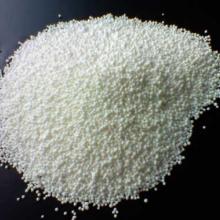Submitted by ivars211 on
NH4NO3
Ammonium nitrate is an oxidiser. It is very hygroscopic and therefore not used very often in fireworks. It finds some use in composite propellants, but performance is not as good as perchlorate-based propellants.
Ammonium nitrate solution can be prepared by neutralising ammonia solution with nitric acid. It is advised to use a slight excess of ammonia. That is to make sure no remaining acid will be present in the ammonium nitrate obtained on evaporation and crystallisation. Otherwise traces of the acid solution may be enclosed in the crystals, possibly leading to spontaneous ignition of mixtures made with it. Large quantities of ammonium nitrate can also be cheaply bought as fertilizer. ammonium nitrate can be extracted from ferilizer with water leaving the ammonium sulfate(solid) behind.Ammonium nitrate can also be found as the active agent in instant cold packs.
Large masses of ammonium nitrate have been known to explode on some occasions although it is very insensitive. Smaller quantities are less likely to detonate. The risk of detonation increases when ammonium nitrate is molten or mixed with fuels such as metal powders or organic substances. Ammonium nitrate should never be mixed with chlorates as this may result in ammonium chlorate formation, possibly leading to spontaneous ignition. Mixtures of metal powders and ammonium nitrate are likely to heat up spontaneously and may ignite, especially when moist. This can sometimes be prevented by the addition of small amounts of boric acid (1 to 2%), but in general it is better to avoid these mixtures at all. The hygroscopic nature of ammonium nitrates makes this problem worse (also see aluminium). Toxicity: Oral rat LD50: 2217 mg/kg.
Ammonium black powderComposition |
AmmonpulverComposition 15 Charcoal |
Photoflash powders #1 Composition |
Rocket propellant (Oxidizing mix)Composition |
Rocket propellant (Visser #1)Composition 13 Urethane plastic |



